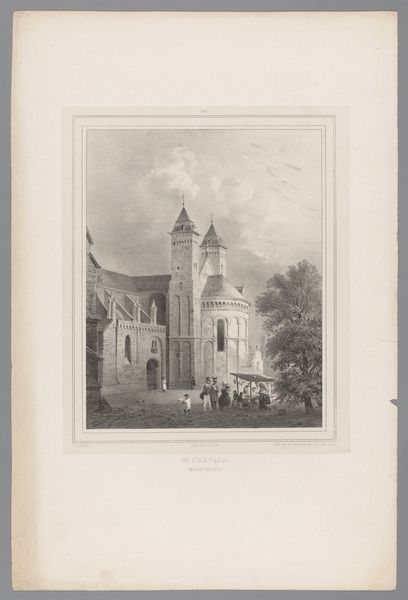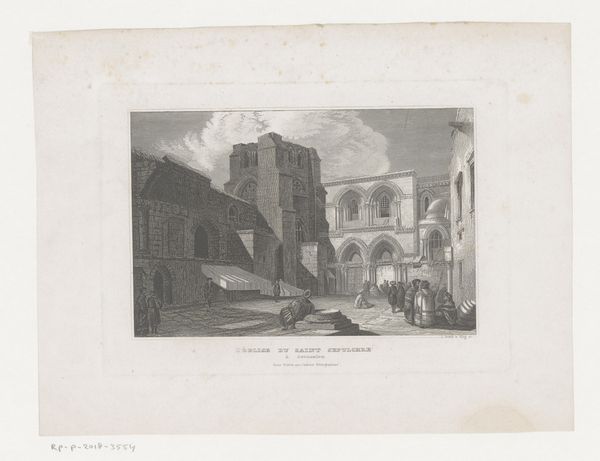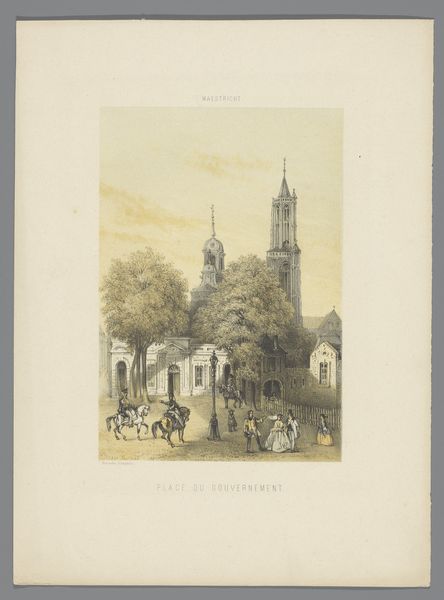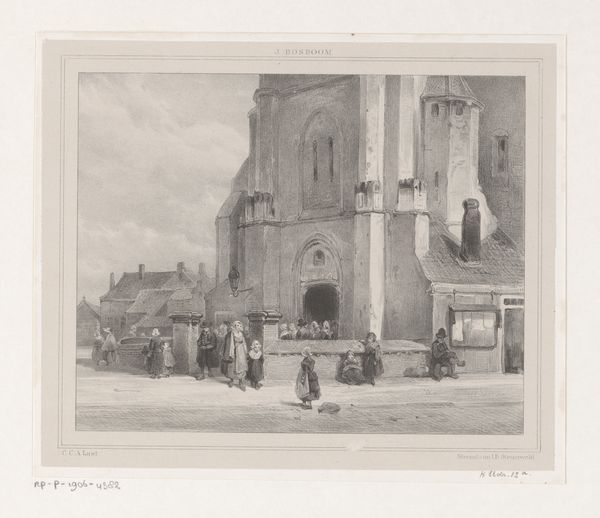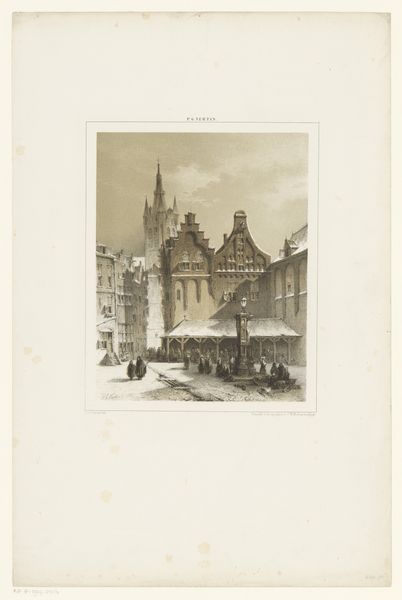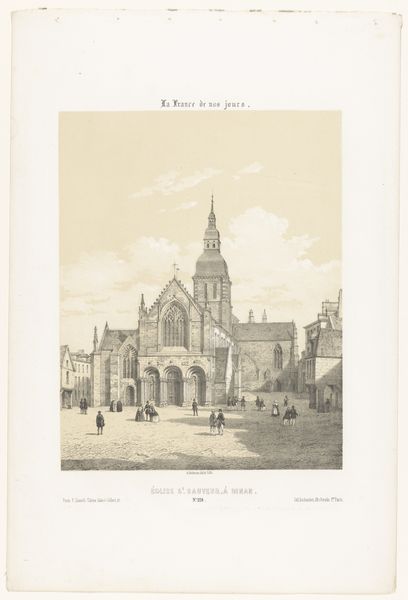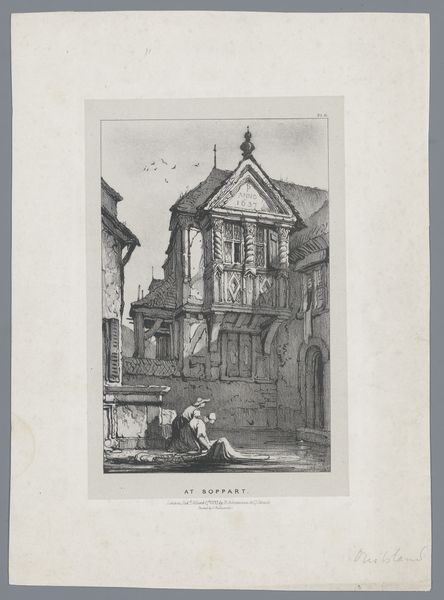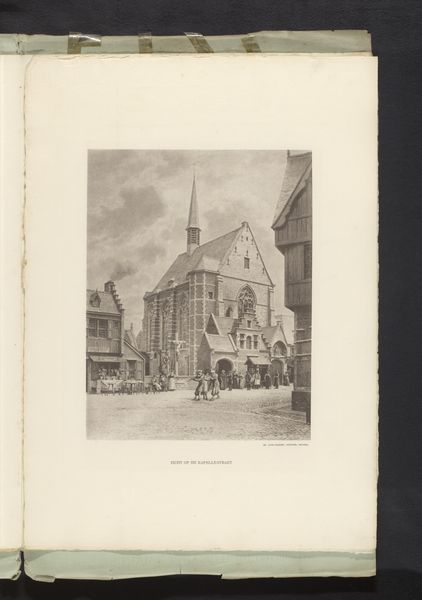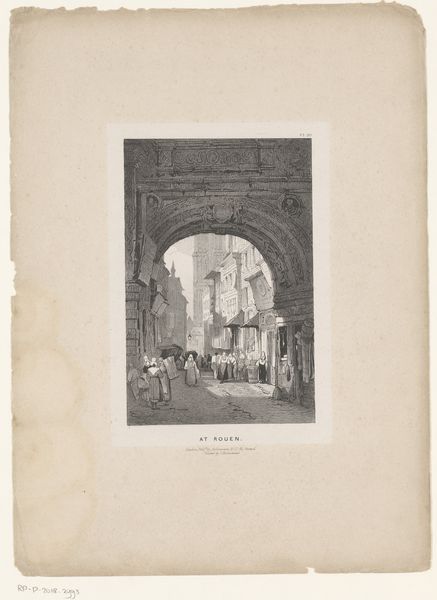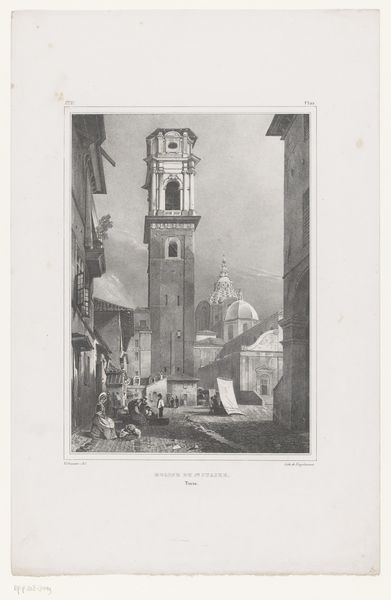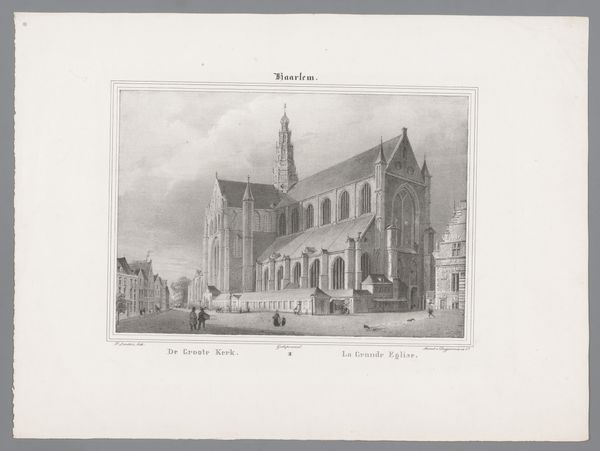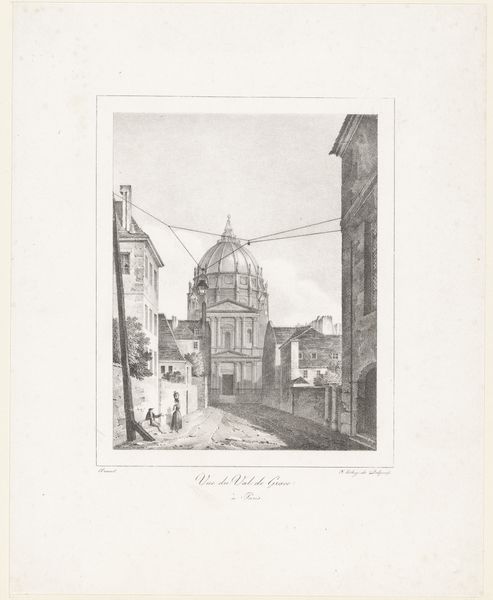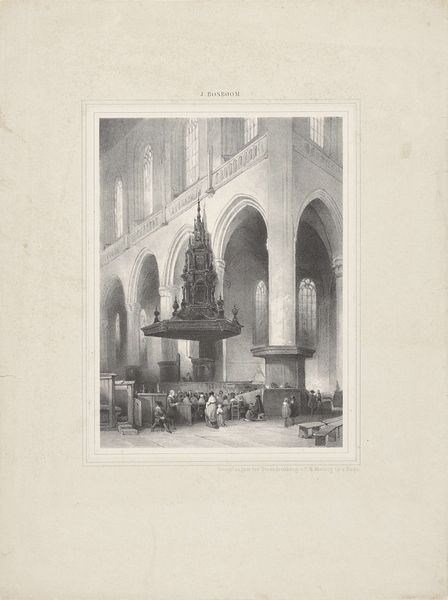
print, engraving, architecture
# print
#
old engraving style
#
romanticism
#
19th century
#
cityscape
#
engraving
#
architecture
Dimensions: height 355 mm, width 265 mm
Copyright: Rijks Museum: Open Domain
Editor: So, here we have Thódore Fourmois’s "Gezicht op het stadhuis te Rotterdam," an engraving from somewhere between 1830 and 1840. There's such a stark contrast in the values that creates a very graphic feel. What do you see in this piece as a reflection of its time? Curator: Well, it presents a meticulously ordered cityscape typical of Romanticism. Yet, considering the era, it is hard to miss the deliberate positioning of the town hall, L'Hôtel de Ville, at the fore. How might this architectural prominence serve socio-political messaging? Editor: Is it perhaps highlighting the city's power structure at the time? Were town halls especially important during the 19th century? Curator: Exactly! The 19th century saw an increasing centralization of civic functions, which manifested architecturally in grandiose buildings that projected authority and stability amidst rapid social change. This engraving then becomes a visual testament to that evolving power dynamic, reproduced for public consumption, wouldn’t you agree? Editor: I see. So, the image isn’t just a pretty view, it’s making a statement about governance and the importance of the city's administration? I hadn't considered that perspective initially. Curator: Indeed. It urges us to see art as a site of cultural production embedded within complex socio-political frameworks. These weren't just neutral depictions but crafted messages intended to shape public perceptions of power and place. Editor: That’s a helpful way of thinking about art's purpose within the broader historical narrative. Thank you. Curator: My pleasure, it enriches my understanding too to see art through another's eyes!
Comments
No comments
Be the first to comment and join the conversation on the ultimate creative platform.
